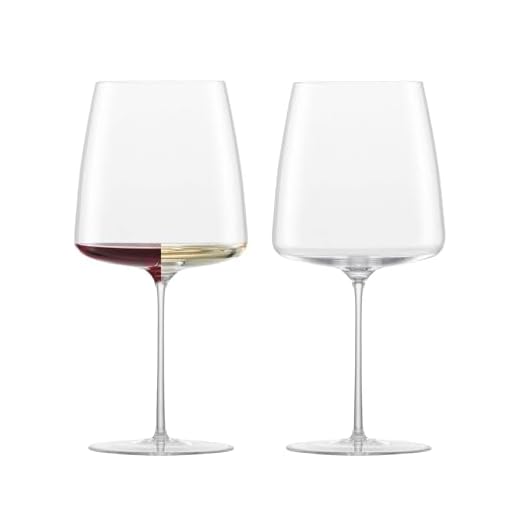



To avoid potential health issues, always prioritize quality when selecting a fermented grape product. Subpar offerings may contain harmful substances, including excessive sulfites or off-flavors that signal spoilage. It’s vital to be discerning; a bottle with an off-putting aroma or taste can indicate that it’s not suitable for consumption.
Examine the storage conditions and expiration dates before indulging. Improperly stored bottles may develop off-characteristics that could lead to discomfort. If a container shows signs of leakage or unusual sediment, it’s best to discard it. Trust your senses; they are your first line of defense against potential adverse reactions.
Recognize the symptoms of distress that can arise from consuming compromised products. These may include nausea, headaches, or gastrointestinal discomfort. If you experience such reactions after consumption, it’s prudent to consult a healthcare professional for guidance. Always prioritize your well-being by making informed choices about the beverages you enjoy.
Potential Health Risks from Inferior Quality Wine
Consuming inferior quality beverages can lead to various adverse effects. It’s crucial to be aware of the signs of compromised products, such as unusual odors, off-flavors, or sediment that should not be present. These indicators often suggest spoilage or contamination, which may result in discomfort or gastrointestinal distress.
Understanding Contaminants
When discussing subpar products, it’s essential to consider the role of contaminants. Compounds like sulfites, which are used as preservatives, can cause allergic reactions in sensitive individuals. Additionally, high levels of histamines and tannins can contribute to headaches and discomfort. Always check labels for additives and potential allergens.
Storage Conditions Matter
Improper storage can significantly impact the quality of the beverage. Exposure to light, temperature fluctuations, and humidity can accelerate spoilage. If you notice that a bottle has been improperly stored, avoid consumption as it may no longer be safe. Always keep bottles in a cool, dark place to maintain their integrity.
Being proactive about the quality of what you consume is key. Pay attention to your body’s reactions and choose wisely to avoid unpleasant experiences.
Identifying Signs of Spoiled Red Wine
Look for the following indicators to determine if a bottle has gone off:
- Color Alteration: A significant change in hue, particularly a browning effect, suggests oxidation. Fresh varieties should maintain a vibrant color.
- Unpleasant Aromas: Musty, vinegar-like, or sour scents indicate spoilage. A healthy bottle will have a clean, fruity, or floral bouquet.
- Off-Taste: A wine that tastes overly tart or has an unusual sharpness signals that it has deteriorated. A smooth, well-balanced profile is expected.
- Presence of Sediment: While some sediment is normal in older varieties, excessive or unusual deposits can be a sign of spoilage.
- Compromised Cork: A cork that is discolored, crumbling, or has a strong odor can affect the integrity of the liquid inside.
Checking these aspects will help ensure a pleasant tasting experience and avoid any unwanted surprises.
Common Causes of Spoilage in Wine
To prevent deterioration, always store your bottles properly and be aware of the following common factors that lead to spoilage:
Oxidation
Exposure to air can lead to oxidation, which alters the flavor profile and aroma of the beverage. An opened bottle should be consumed or properly sealed and refrigerated within a few days to maintain its integrity.
Temperature Fluctuations
Extreme changes in temperature can negatively impact the quality. Ideally, keep your bottles in a stable environment, between 50-55°F (10-13°C). Avoid areas with direct sunlight or significant heat sources.
Contaminated Cork
A faulty cork may allow unwanted bacteria or mold to enter the bottle. Ensure that corks are intact and free from any signs of mold or damage before purchasing.
Improper Storage Conditions
Store bottles horizontally to keep the cork moist, preventing it from drying out and allowing air in. Additionally, high humidity levels are crucial to maintain the cork’s integrity.
| Cause | Impact |
|---|---|
| Oxidation | Flavor and aroma alteration |
| Temperature Fluctuations | Degradation of quality |
| Contaminated Cork | Bacterial contamination |
| Improper Storage | Air exposure and cork damage |
For those curious about food pairings, check out this guide on how long does it take to cook curry goat.
Health Risks Associated with Drinking Spoiled Wine
Consuming spoiled beverages can lead to gastrointestinal distress, including nausea, vomiting, and diarrhea. In some instances, individuals may experience headaches or allergic reactions due to the presence of certain compounds that develop during spoilage.
Potential Contaminants
Microbial contamination is a significant concern. Harmful bacteria and molds can proliferate in improperly stored products, leading to foodborne illnesses. Symptoms can vary from mild discomfort to severe gastrointestinal issues, depending on the pathogen involved.
Effects of Chemical Changes
Oxidation and other chemical alterations can also pose health risks. When the drink is exposed to air, it undergoes changes that may produce undesirable compounds. These can trigger allergic reactions or exacerbate sensitivities in some individuals. Always evaluate the condition of your beverage before consumption to mitigate health risks.
How to Properly Store Wine to Prevent Spoilage
Maintain a consistent temperature between 50°F and 55°F (10°C to 13°C) for optimal preservation. Fluctuations can lead to premature aging and spoilage.
Keep bottles horizontal to ensure the cork stays moist, preventing air from entering. This is critical for maintaining the integrity of the beverage.
Store in a dark environment, away from direct sunlight. Ultraviolet rays can degrade the quality, causing off-flavors and aromas.
Humidity Control
Aim for humidity levels between 50% and 70%. Excessive dryness can dry out the cork, while excessive moisture may encourage mold growth.
Vibration Minimization
Limit movement and vibrations, which can disturb the sediment in the bottle and alter the taste. Choose a quiet location for storage.
What to Do if You Suspect Spoiled Wine
Trust your instincts. If something feels off with the beverage, it’s better to err on the side of caution. Here’s what I recommend.
- Stop Drinking: Discontinue consumption immediately. Your health should always come first.
- Assess the Situation: Examine the appearance and aroma. Look for cloudiness, sediment, or an unusual smell. If any of these are present, it’s likely compromised.
- Taste a Small Amount: If the look and scent seem acceptable, take a cautious sip. A sour or vinegar-like flavor indicates spoilage.
- Dispose of the Product: If you confirm any signs of deterioration, discard the beverage. It’s not worth the risk.
- Document the Details: Note the brand, vintage, and any specific observations. This information could be useful for future reference or when discussing with retailers.
- Contact the Retailer: If purchased recently, reach out to the store for feedback. They may offer a replacement or refund.
- Educate Yourself: Familiarize yourself with proper storage techniques and optimal consumption windows. This knowledge can help prevent similar issues in the future.
Taking these steps will ensure that you prioritize your wellbeing while enhancing your understanding of the product. Enjoy your exploration of wines safely and responsibly!
Choosing Quality Red Wine to Avoid Health Issues
Opt for wines from reputable vineyards with a history of quality production. Look for labels that feature certifications or awards, which often indicate adherence to high standards. Research regions known for excellence, such as Bordeaux or Napa Valley, as they often maintain stringent regulations.
Examining Ingredients and Production Methods
Pay attention to the ingredient list; avoid those with additives like sulfites or artificial colors unless necessary. Seek organic or biodynamic options, as they typically utilize minimal intervention during production. This approach not only enhances flavor but also reduces potential health risks.
Understanding Tasting Notes
Familiarize yourself with tasting notes that indicate freshness. A well-balanced wine should exhibit rich aromas and flavors without overpowering acidity or bitterness. If a bottle smells off or has an unusual taste, it’s a sign to steer clear. Always trust your palate.
Purchase from trusted retailers who store their products correctly, as improper storage can compromise quality. Always check the bottle’s condition before purchasing; avoid any with damaged labels or signs of leakage.
Lastly, keep an eye on vintages. Some years yield superior fruit due to ideal growing conditions. Research past vintage ratings for your chosen varietals to ensure a pleasurable experience with every glass.









